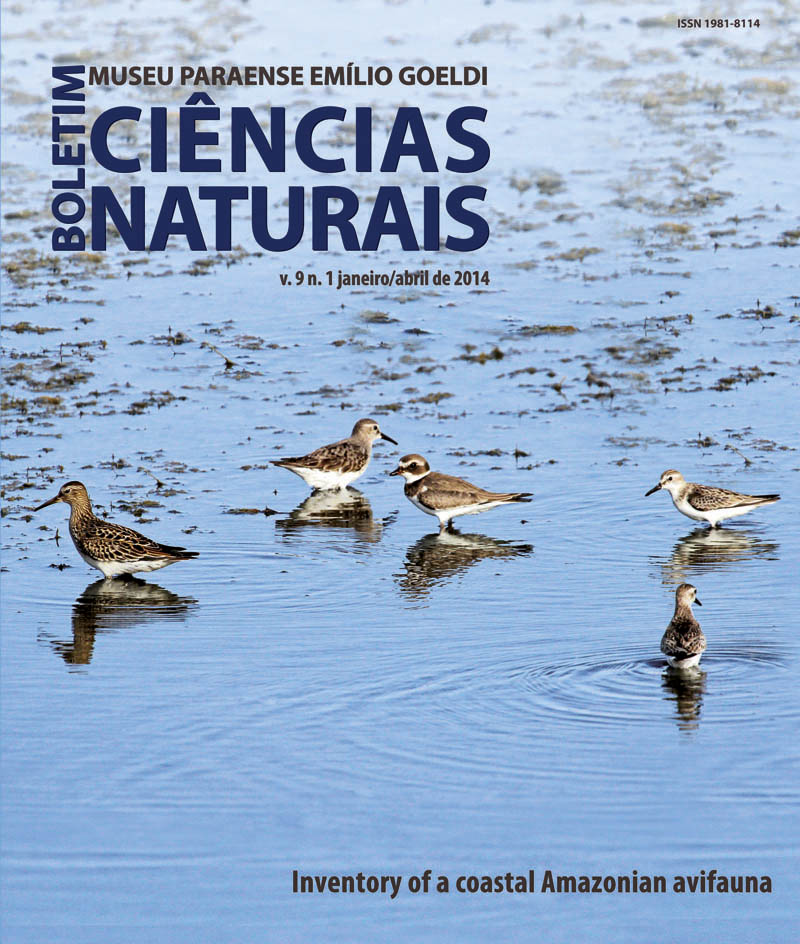Wood anatomy of six species of the genus Cecropia Loefl. (Urticaceae)
DOI:
https://doi.org/10.46357/bcnaturais.v9i1.542Keywords:
Wood anatomy, Imbaúba, Anatomic structuresAbstract
The objective of this work was to anatomically characterize six species of Cecropia to contribute to the identification of the following species: C. distachya Huber, C. latiloba Miq., C. obtusa Trécul, C. obtusifolia Bertol., C. palmata Willd. and C. sciadophylla Mart. The anatomic descriptions followed the traditional methodologies used for studies of wood anatomy. The species showed multiseriate and heterogeneous rays, composed of procumbent cells, square and erect, an aliform parenchyma with variation of wings (with losangular extension, linear and thick), predominantly solitary pores and diffuse porosity. C. latiloba Miq. was the only specie that had diffuse axial channels and septate fibers, being the specie with the greatest variation among the six species analysed. At macroscopic level, the species differentiated by the growth layers and the type of axial parenchyma, and, at microscopic level, the differentiation occurred by the presence or absence of septate fibers, axial channels and type of axial parenchyma. Even without an optic tool the species can be differentiated.
Downloads
Published
Issue
Section
License
Publication means fully assigning and transferring all copyrights of the manuscript to the journal. The Liability Statement and
Assignment of Copyrights will be enclosed with the notice of acceptance. All the authors must sign the document and return it to the journal.








